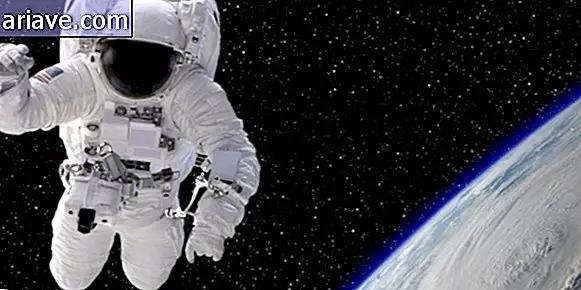10 spectacular images recently recorded on the Solar System
It's been a few decades since astronomers have given us incredible images of stars that "inhabit" the Solar System. However, with the technological advances of recent years and the launch of increasingly powerful telescopes and space probes, the records not only allow us to feel closer to celestial objects that are millions of miles away, but sometimes or On the other hand, photos look more like works of art than captures whose purpose - deep down - is to help science understand the universe.
For the people of The Washington Post have published a beautiful gallery of images - containing edited and unedited records - recently released by space agencies, and we here at Mega Curious have selected some of the most interesting to share with you. Check it out below:
1 - Jupiter

The image above was captured by the Hubble Space Telescope in early April when, due to its orbit, the planet was only 668 million kilometers from Earth.
2 - Jupterian Atmosphere

The photo above of Jupiter's atmosphere shows huge clouds that were captured by the Juno spacecraft 14, 000 kilometers from the surface.
3 - South Pole

Also recorded by the Juno spacecraft, the image above was clicked in February during a flyover over Jupiter's south pole - nearly 110, 000 kilometers in altitude.
4 - Martian Canyon

The image above, released by the European Space Agency in February this year, shows a huge canyon that lies at the north pole of Mars. Called Chasma Boreale, it is about 560 kilometers long - meaning that this formation is over 100 kilometers longer than the famous US Grand Canyon.
5 - Plain

Captured in January of this year, the image shows a region of Mars called Utopia Planitia, a huge impact basin that occupies 3, 300 kilometers in diameter.
6 - Ceres

Ceres, as you may know, is a dwarf planet that resides in the asteroid belt that exists between Mars and Jupiter. The above image was recorded at the end of March by the Dawn spacecraft at a distance of 48, 300 kilometers.
7 - Waves?

Although they look like waves, the above formations are layers of deposits in deposits present in Mars' Galle crater in the Argyre Planitia impact basin. The image was released at the end of March this year.
8 - Atmosphere of Saturn

Unprocessed image showing what NASA's Cassini spacecraft “saw” during its first dive into the space between Saturn and its rings. Never had man-sent equipment recorded such an image as close to the gas giant's atmosphere.
9 - Satellite

Did you see that little white dot next to Saturn's rings? It is one of the moons on the planet, Mimas, which measures about 2 kilometers in diameter. The image was captured by Cassini in November last year.
10 - Distant Neighbor

Released in March this year, the image above shows Pluto backlit by the sun. The record was made by the New Horizons spacecraft when it was 193, 000 kilometers away from the dwarf planet.
* The image that opens this story shows a huge crater in the northern hemisphere of Mars. It belongs to a class of geological formations known to astronomers as "gully" (or gullies in the plural). In Portuguese, this term refers to gullies, and scientists have chosen this terminology to refer to this type of Martian crater precisely because they resemble the bureaucrats that appear here on Earth through the action of erosion.
***
Mega is competing for the Digital Influencers Award, and you can help us be double champions! Click here to find out how. Enjoy following us on Instagram and subscribe to our YouTube channel.











